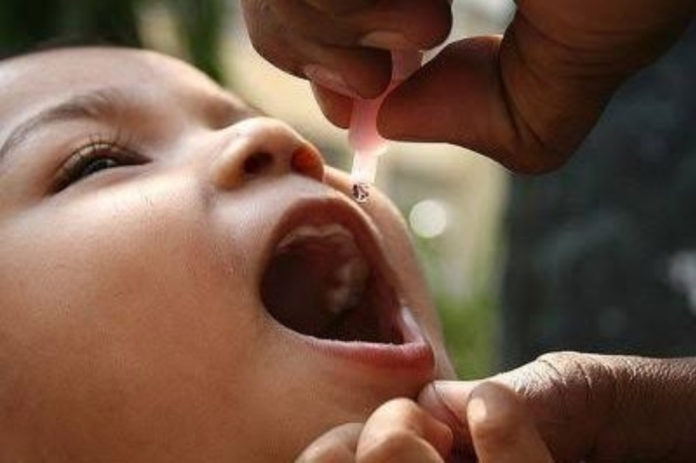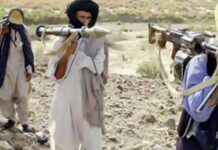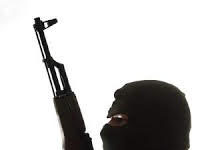New Delhi (NVI): After being put on hold due to the COVID-19 pandemic, Philippines has resumed its Sabayang Patak Kontra Polio immunization campaign to combat the poliovirus outbreak in the country.
The country’s Department of Health (DOH) has resumed the programme with support from the World Health Organization (WHO) and United Nations Children’s Fund (UNICEF).
In a joint statement, the DOH, WHO and UNICEF said the next phase of the Sabayang Patak Kontra Polio campaign in the whole of Mindanao will start on 20 July and last until 2 August 2020 for children under 5 years old. Children under 10 years old in selected areas in Mindanao will also receive polio drops, it said.
Mindanao, also commonly known as Southern Philippines, is the second-largest island in the Philippines.
“Meanwhile, new polio immunization campaigns for children under 5 years old will begin in a phased approach in Region 3 (Central Luzon) on 20 July and in the provinces of Laguna, Cavite and Rizal in Region 4A in August,” the statement read.
DOH and the Centers for Health Development, together with WHO and UNICEF, have been preparing for the immunization campaign, addressing the special challenges posed by COVID-19 pandemic through online orientations and planning with field teams.
“Continuous implementation of polio response amid the present health crisis we are facing is important as this will prevent not only the debilitating effects of the disease, but also interrupt the transmission during a pandemic,” said Health Secretary Francisco T. Duque III.
“Polio is a vaccine-preventable disease and we cannot let our gains over the years go to waste by deprioritizing our polio response. It is imperative for parents and caregivers to have their children vaccinated, while strictly adhering to infection prevention and control protocols, as we cannot afford to overwhelm our health system with another outbreak,” Duque added.
The Health Secretary further said that a whole-of-government and whole-of-nation approach is critical in preventing the polio outbreak. “We are calling for the support of the local government units, and all relevant stakeholders as we endeavor to continue the ‘Sabayang Patak Kontra Polio’. This way, we become part of the solution in helping each other stay healthy and save lives,” he said.
The polio outbreak in the Philippines was announced last 19 September 2019, with the first known confirmed case from a 3-year-old girl in Lanao del Sur. Since then, 15 more children have been confirmed with polio with ages ranging from below one-year-old to 9 years old. The cases were identified in the Bangsamoro Autonomous Region in Muslim Mindanao (BARMM), Region 12 (Soccsksargen), Region 3, and Region 4A, according to the report.
Polio is a highly infectious disease that mainly affects young children, who have not completed their vaccination schedules. The disease is transmitted from person-to-person primarily through the faecal-to-oral route resulting from poor sanitation and hygiene practices, and less frequently through contaminated food or water. Once in the intestine, the poliovirus multiplies and it can invade the nervous system and cause paralysis or even death.
“We have to remember that the polio outbreak is not over, so it is critical that we continue this life-saving work of immunizing our children against this debilitating disease, while responding to COVID-19,” said Dr Rabindra Abeyasinghe, WHO Representative in the Philippines.
“But we must also remember to ensure that our dedicated frontline health workers and our communities are fully protected from COVID-19 during the polio campaign.
“To the health workers as well as the parents, caregivers and the children participating in the campaign: Be vigilant in practicing the preventive measures such as frequent hand hygiene, physical distancing and wearing of masks during planning, implementing and evaluating the polio response,” he added.
The Sabayang Patak Kontra Polio campaign started in July 2019 after the detection of polioviruses from waterways in the National Capital Region (NCR). During the first quarter of 2020, immunization rounds also continued in Mindanao and the NCR, reaching 4.5 million children, more than 95% of the target children for vaccination. It is important to reach at least 95% coverage for each round of the polio immunization campaign to ensure enough immunity in the community to stop the spread of polio in the Philippines.
UNICEF helped the Philippines government procure supplies such as vaccines, freezers, ice packs, and vaccine carriers; develop and disseminated communication materials; enjoined civil society, religious leaders and other influencers to spread messages about polio prevention; trained health workers and other frontline workers on interpersonal communication and social mobilization; conducted planning and assessments, and gave assistance for proper vaccine disposal.
On the other hand, WHO continues to provide technical advice in intensifying polio surveillance, planning for and monitoring of immunization campaigns, infection prevention and control measures, and risk communication. WHO has also deployed international and national polio experts who provide on-the-ground technical support to the regions and local implementers.
-RJV/ARK








